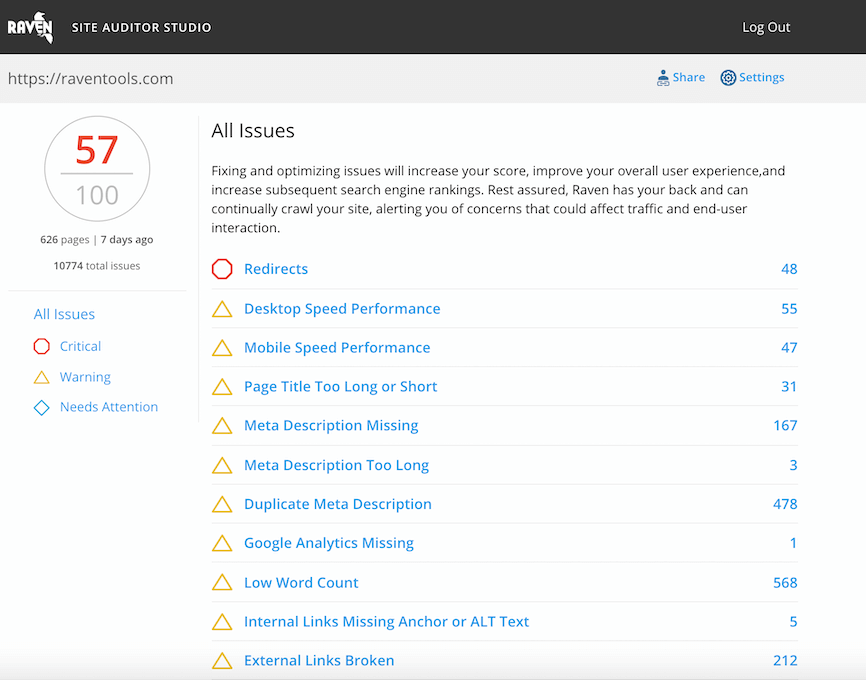Ever had a migraine? One of those eyesight-blurring, arm-tingling, nausea-inducing, skull-exploding headstorms that makes you crawl to the nearest dark room immediately and curl up like a grub?
If not, count your blessings.
If you have, then you know how important it is not to ignore triggers.
A trigger is a thing that sparks a result. It activates a pattern. Though triggers are often described as negative things — the stress and foods that cause migraines or the H.A.L.T. factors of addiction, for example — they can be positive.
And for writers, they can be positively essential. To track your own triggers, think about what preceded your last few periods of writing inspiration. Once you learn your triggers, you will recognize them when they’re happening as harbingers of good writing opportunities. And when you’re suffering from writers’ block, you can create circumstances that set off your triggers and get un-blocked.
Basically, it’s not just a matter of knowing when to write — it’s knowing what will set off a burst of writing.
Here are eight common triggers you should never ignore.
1. Patterns
If, in the middle of the mundane, you notice a pattern, you might be on to something new. Follow up on those hunches.
Farhad Manjoo of Slate noticed that his holiday gifts were easier to open this year. He wrote “A Christmas Miracle: Packaging Is Less Infuriating” about how his anecdotal (but frequent) experience might correlate with new practices by package designers and manufacturers. Comments included:
“My husband and I were just talking about this. Toys were SO much easier to open this year.”
“I did notice that I cursed a lot less this year while opening my daughter’s toys. I simply thought my toy box opening skilz had improved with three years of practice under my belt. Little did I realize until now that manufacturers have made the packaging easier to open. Well done.”
What he wrote enlightened some and brought confirmation to others. If he hadn’t acted on his hunch after several experiences in a row, neither would have happened.
There’s a loose rule in journalism that two similar things are interesting but three similar things make a trend. Perhaps that’s what led to The Guardian‘s recent story, “No boys allowed: the rise of single-sex clubs and societies,” which namechecks three new women-only-allowed restaurant/club ventures. Is it really a pattern, or just happenstance? Time will tell; even the writer concludes that this isn’t likely to be widespread trend. Don’t hesitate to investigate and report, but take caution before you make sweeping predictions based on tiny patterns.
2. Doubt
Doubting a rumor — or, say, anything a politician says — is an excellent trigger for investigative writing.
Have you checked out PolitiFact, the Pulitzer-prize winning microsite from The Tampa Bay Times? Its Truth-O-Meter measures the factuality of political statements (as verified by writers and editors of the Times).
If you come across a statement that seems like it can’t possibly be true — or that so many people assure you it is true that you think there’s some groupthink at work — report the facts, then write your conclusion.
This is how Courtney Seiter, Raven’s community manager, debunked a popular rumor recently. A Facebook status message making the rounds seemed so legit that even Raven’s Chief Product Officer (a not un-savvy person) fell for it, but it didn’t sit right with her social media experience. She started digging for the truth and wrote a blog post to help other people from spreading misinformation.
3. Curiosity
What kind of person writes a 464-page book about toothpicks? Henry Petroski, a man who wrote 448 pages about the pencil. The more that Petroski explored the origins, materials, manufacturing and uses of the toothpick, the more he learned about intersecting human cultures, social mores, trade secrecy, patent battles and industry infighting. His curiosity uncovered stories he never expected to find.
Other examples of writing born from curiosity:
- The Explainer from Slate, a regular column that explains a variety of questions, including “Why do British singers sound American?” and “Can you libel someone on Twitter?”
- Really?, a health blog by the New York Times that answers questions such as “Does chewing sugar-free gum reduce cavities?” and “Can eye problems cause headaches in children?” with the latest scientific research.
- QuoteInvestigator.com, which investigates the origins of Twitter-popular quotes. Did Ralph Waldo Emerson say Life is a journey, not a destination, or did someone else?
If you ever think to yourself, “I wonder how that works” or “How do they do that?” or “Why do they do that?” or “I wonder what he/she is really like”, try to find out. Start with research; if no one else has asked the question or you can’t easily find an answer, that’s a good candidate for a writing topic.
4. Enthusiasm
Perhaps there’s a subject you’re so passionate about that you can’t help but share your thoughts and dreams with the world. Think Cosmos by Carl Sagan, which became the best-selling science book in the English language.
Or perhaps you have a hobby that brings you such joy that your enthusiasm for it is catching.
Trend spotter Bill Cunningham falls into the latter category. He has been taking photos for decades for his On the Street column in The New York Times. This now-83-year-old bikes the streets of New York City day in and day out — rain, snow and shine — where he sees before almost anyone else what fashionable forerunners are beginning to wear. Watch Bill Cunningham New York and decide whether The Sartorialist or Instagram might have ever become so popular without his early, unflagging enthusiasm for fashion and street photography.
When you find yourself having a soapbox moment — when you recognize that you’re waxing enthusiastic about something that’s making others’ eyes go blank — stop talking and write your words down.
5. Insight
The insight trigger happens when you make a connection between two unrelated things in your head and suddenly have a whole new way of explaining one or both of them. You could arrive at the perfect metaphor.
Christians might consider Jesus the metaphor master. Think of the tale of the prodigal son or the lost sheep as written in Luke. Both are metaphors for the value of a repentant sinner.
Identity and branding designer Paula Scher has an interesting metaphor for her creative process, as described in How To Think Like a Great Graphic Designer:
It’s so hard to describe how things happen intuitively. I can describe it as a computer and a slot machine. I have a pile of stuff in my brain, a pile of stuff from all the books I’ve read and all the movies I’ve seen. Every piece of artwork I’ve ever looked at. Every conversation that’s inspired me, every piece of street art I’ve seen along the way. Anything I’ve purchased, rejected, loved, hated. It’s all in there. It’s all on one side of the brain.
And on the other side of the brain is a specific brief that comes from my understanding of the project and says, okay, this solution is made up of A, B, C, and D. And if you pull the handle on the slot machine, they sort of run around in a circle, and what you hope is that those three cherries line up, and the cash comes out.
You can’t make such connections without having a variety of things in your head to connect. Read. Listen. Watch. View. Talk. Consume, absorb, ponder and discuss a multitude of ideas from a multitude of sources. Then, connect.
6. Problems
Longtime writer, editor and blogger Knight Stivender explains how this trigger works for her:
When you have been thinking about something for a while, maybe on and off, mapping it out in words puts meaning to it. The problem is the trigger, and writing about it solves it.
For example, early after her divorce, Stivender struggled with newfound alone time. She explored the differences between loneliness and solitude in writing, and this thoughtful post is the result.
39-year-old writer Kate Bolick still wondered if she made a mistake a decade earlier by breaking up with a perfectly marriageable man for “two intangible yet undeniable convictions: something was missing; I wasn’t ready to settle down.” The problems she was wrestling as a still-single woman 10 years later led her to write “All the Single Ladies” for The Atlantic Monthly, which gave shape to the changing emotions about and definitions of marriageability through research, statistics, interviews and comparisons. In turn, Bolick’s readers — as evidenced by the comments — offered a variety of perspectives and solutions that she hadn’t even touched on.
Whether the problem you’re dwelling on is personal or global, rational or emotional, or any combination of the four, write it out. Define your thoughts and feelings. Make a pro/con list. Find and cite examples of what others have done. Ask readers for fresh ideas. You might arrive at a solution. Even if you don’t, you’ll likely stumble upon support you didn’t know you had.
7. Beauty
Fascination with beauty of all sorts — from the natural to the unnatural to the macabre — has motivated artists, poets, lyricists and storytellers of all kinds for centuries.
Nature inspired John Keats (think Ode to Autumn) and Henry David Thoreau (Walden). Dancers enraptured (and engulfed) Degas. Mother-child relationships inspired Mary Cassatt.
You have to have a brain full of beautiful things — memories, images, feelings — to inspire you to write another kind of beauty. Go to art museums. Bookmark photo blogs. Investigate the neighborhood park. Travel. Watch insects. Observe people alone. Observe people together.
However you define beauty, after you experience the beautiful — and recognize that you have just experienced the beautiful — sit down to write. See what happens. Your words might be about what you just experienced, or they might be about something else entirely.
Here’s an exercise to get started. The image in the photograph above is a field of flowers on the outskirts of a city. The photograph’s title is “the blood of factories.” Does that juxtaposition trigger a story idea for you?
8. Emotion
When something hits you in the chest because it’s so beautiful or so painful. When something enrages or outrages you. When something floods you with feelings you haven’t had in years. That’s when you should start writing.
Powerful writing is triggered by emotions. Powerful writing triggers emotions in others.
A father accidentally leaves his infant son buckled into the car seat on a hot summer day, all day. His son dies. Is it manslaughter, plain and simple? Or an understandable, if tragic, mistake? Either way, should he be punished legally? Read this.
A cartoonist loves his dog. Read this.
How did those stories make you feel?
What makes you feel?
Write about it.

Analyze over 20 different technical SEO issues and create to-do lists for your team while sending error reports to your client.







Wow…you got me on #8. I had never read the article about the father who left his infant in the car. Definitely some emotion in that one. Not only from the writer, but as a reader. As a father of two I was choked up to read some of the stories of people who lost their children in such a way. I can’t even imagine.
That said, I really liked your post. When it comes to writing, I struggle. I need a trigger to write. Some bloggers pump out a piece a day with no problem, but the triggers you mention are basically the only thing that can get me to write. Something needs to spark inspiration. I love that you point these out because I think a lot of bloggers write just to write. There’s no trigger, no substance behind it and I don’t know if its because they simply feel they need to write, or because they don’t identify possible triggers.
Mike, I don’t have any children, but that article grabs me by the throat every time. I’ve heard so many parents say it could never happen to them. Ever. And this shows that’s just not true. (Also, intellectually, this seems like a problem we could alleviate if we could find a solution that keeps children in car seats in the front seat.)
Thanks for the appreciation. As far as day-in-day-out work writing goes, my No. 1 trigger is insight. I read a variety of things, have lots of conversations about what I’ve read, then use both to figure out it all could apply to online marketing. I’d like to improve writing that comes from emotion and elicits emotions, especially in copywriting. That’s a skill.
Oh! I thought of another trigger: Need. Ask yourself, what do my customers need to know? What do I think my industry or community needs to know? That is at least a basic trigger for writing when you’re otherwise uninspired.
This is awesome! There are so many things out there that can prompt some truly inspirational writing. Thanks for expanding on a couple of topics. Furthermore, don’t you think that writing that comes from one of these 8 topics are typically more heartfelt and interesting? I sure do.
I agree. What would you add to the list?
I found myself laughing while reading through this list. At some point or another I have used all of these triggers. I am always “looking for something to write” but have never considered paying attention to my emotions in order to anticipate when I might find something to write.
Excellent post; it’s going in my Evernote.
Thank you, Trevor.
This is my new favorite post in the entire world (I don’t say that lightly). Absolutely love it. – Smitten Fan
This is my new favorite comment in the entire world (I don’t say that lightly). Bless you. – Grateful writer
Perhaps a combination of emotion and problem, it is concern that pushes me to write. A desire to inspire, encourage, and help pursues me relentlessly; my proverbial pack of hounds leaves me restless and filled with disquiet. Who, then, am I helping, others or myself? 🙂
Who says it can’t be both? 🙂
This is a great article, thank you! Storytelling is overlooked quite often in “content marketing” or business writing or whatever you want to call it.
You’re welcome. Thanks for leaving a comment. I haven’t read “Tell to Win” by Peter Guber yet, but it’s on my list of storytelling for marketing. (On the other hand, when Forbes reviews it and HuffPo declares it a game changer, I’m not sure whether to trust the hype. Ha!) http://www.forbes.com/sites/stevedenning/2011/02/28/book-review-tell-to-win-by-peter-guber/
Definitely adding this to my “Advice Classics” category! I am constantly experiencing these situations, as well as those I call “teachable moments” (similar to #5). It never occurred to me, however, that these would be of value to a reader. And how much fun it will be to write about those things that catch my attention daily; Thanks for the great column!
What a compliment! Thank you. Sometimes if you just write down the teachable moments when the happen — sans story — you’ll find a way to work them in later or let them serve as the framework of a post. I look forward to seeing what you write.
I write to share my emotions, beauty, problems, curiosity, enthusiasm 🙂
All good things — it sounds like you write to write about everything 🙂